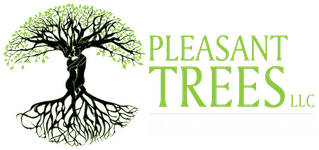Trees are vital components of our environment, providing a plethora of benefits – from air purification to enhancing the aesthetic appeal of our landscapes. However, trees, like all living organisms, can pose risks if not properly managed. This is where the expertise of certified arborists becomes invaluable, especially in conducting Tree Risk Assessments (TRA). In this blog, we will delve deep into what Tree Risk Assessment is and explore the Tree Risk Assessment Qualification (TRAQ) program, an essential credential for arborists focusing on this area.
What is Tree Risk Assessment?
Tree Risk Assessment is a systematic process used by arborists to evaluate the potential hazards posed by trees. This process involves a detailed examination of a tree’s health, structure, and the environmental conditions surrounding it to identify any factors that might indicate a likelihood of failure. The primary goal of a tree risk assessment is to ensure public safety by mitigating the risks associated with trees in urban and natural environments.
The process can be broadly categorized into three levels:
- Level 1 – Limited Visual Assessment: This is a preliminary assessment that involves a visual inspection of a tree from a specified distance. It’s often used to quickly evaluate a large number of trees to identify any obvious signs of potential failure.
- Level 2 – Basic Assessment: This involves a more detailed visual inspection, including the use of simple tools to assess the tree’s structure, health, and the site conditions affecting it. This level of assessment is more thorough than Level 1 and provides a better understanding of the tree’s condition.
- Level 3 – Advanced Assessment: This is the most detailed level of assessment and may involve advanced diagnostic tools or even soil analysis. This level is typically reserved for trees that have been identified as potentially high-risk during the Level 2 assessment.
The Importance of Tree Risk Assessment
Conducting a tree risk assessment is crucial for several reasons:
- Public Safety: By identifying potentially hazardous trees, arborists can take appropriate measures to mitigate risks, thereby ensuring the safety of people and property.
- Tree Health: Assessments can reveal health issues or structural weaknesses in a tree, allowing for targeted management strategies that can help prolong the tree’s life.
- Legal and Financial: Property owners and municipalities can reduce their liability by demonstrating due diligence in managing the risks associated with trees on their property.
- Conservation: Identifying and managing tree risks can also contribute to the conservation of trees, ensuring that only those posing significant risks are removed or altered.
What is TRAQ?
The Tree Risk Assessment Qualification (TRAQ) is a program developed by the International Society of Arboriculture (ISA) to standardize the process of tree risk assessment. This credential is designed to ensure that arborists conducting tree risk assessments have the necessary knowledge, skills, and competence to do so effectively.
The TRAQ program includes a comprehensive curriculum covering various aspects of tree risk assessment, including:
- Tree Biology and Mechanics: Understanding how trees grow and respond to environmental stresses is fundamental in assessing their risk.
- Tree Inspection and Assessment: Learning systematic approaches to inspect and assess trees for signs of potential failure.
- Data Analysis and Risk Categorization: Training on how to analyze assessment data and categorize risk levels according to ISA guidelines.
- Risk Management Strategies: Learning about the various options available for mitigating identified risks, including pruning, cabling, bracing, or removal.
Obtaining the TRAQ credential involves completing a course that includes both classroom instruction and fieldwork, followed by a comprehensive examination. Arborists who achieve this qualification are recognized as having a high level of expertise in tree risk assessment, making them invaluable assets to their communities and clients.
Tree Risk Assessment is a critical component of urban forestry and arboriculture, playing a vital role in ensuring the safety and health of our trees and the environments they inhabit. With the TRAQ program, arborists are better equipped to identify, assess, and manage tree risks effectively, contributing to safer and more sustainable urban landscapes. Whether you’re a property owner, municipality, or simply a tree enthusiast, understanding the importance of tree risk assessment and the value of the TRAQ credential can help you appreciate the complex interplay between trees and their environments.
If you need a Tree Risk Assessment done for your project, and are in the Maryland-area, get in touch with us today to get started!
